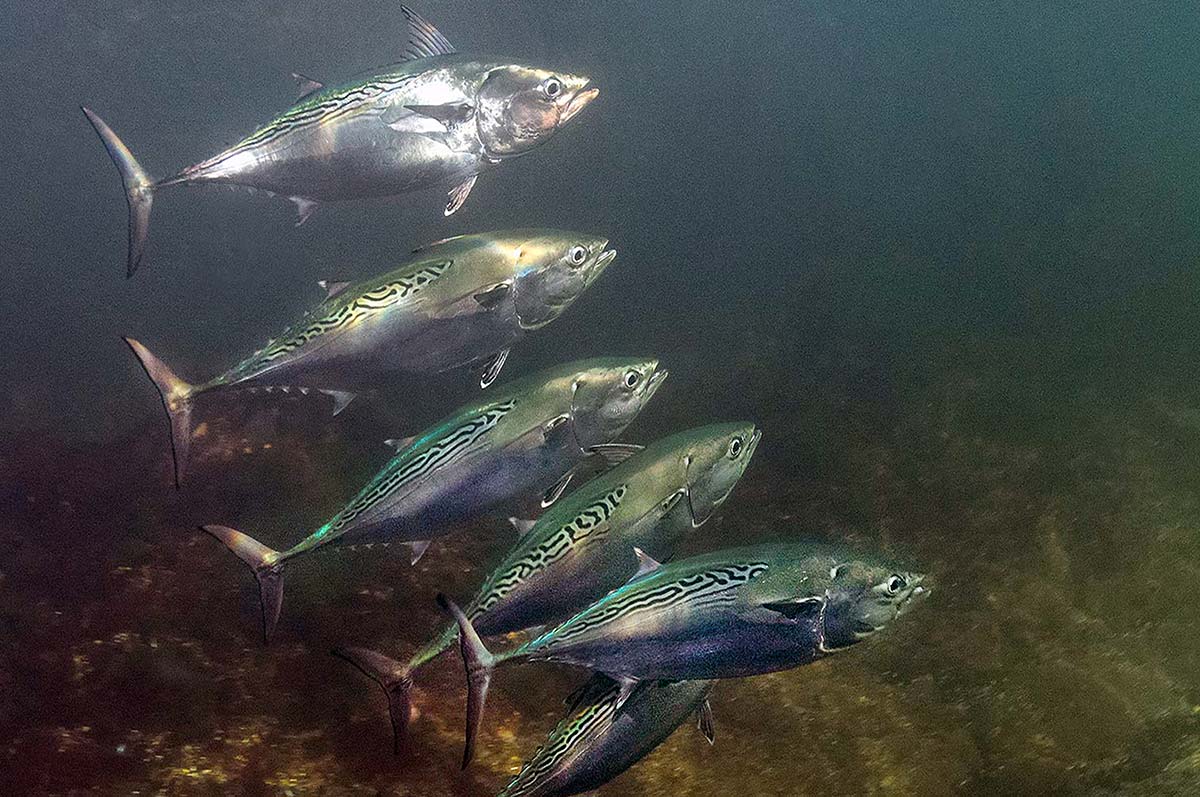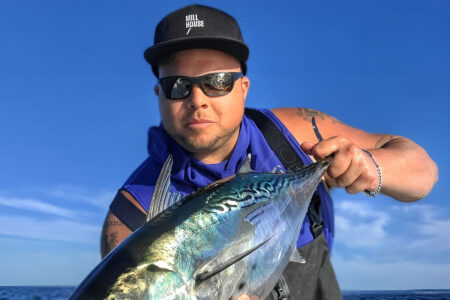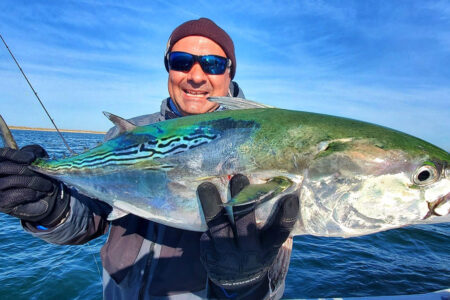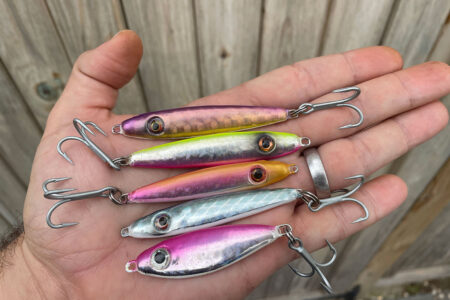
False Albacore (sarda sarda) are known by many names around the world, including Atlantic bonito, little tunny, albie, Atlantic little tuna, Atlantic little tunny, bone-eater, and mackerel tuna. They are found in the tropical and temperate coasts of the Atlantic Ocean, the Gulf of Mexico, and the Mediterranean and Black Seas. In the western Atlantic, they have been caught along the coast of Nova Scotia, Canada, but typically the northern most range is Cape Ann, Massachusetts. False albacore are present to a lesser degree around southern Florida and the northern Gulf of Mexico, where they are often referred to incorrectly as bonito. They are not commonly found in most of the Caribbean Sea.
This is a schooling fish that spends most of its life in the open ocean and coastal ocean areas. It has a torpedo-shaped body and deeply forked, crescent shaped tail resembling that of a tuna, with a pointed snout which is perfect for short, fast bursts of speed to escape predators. False albacore have a dark, blue-gray coloration on top with worm-like marking along the upper portion of their body, changing to a silver white bottom. They closely resemble the striped bonito in body shape and size. Fin structure is almost identical as well. The color pattern of a false albacore helps distinguish this fish from a striped bonito. The color is above the horizontal lateral line of the fish, and the lateral line does not bend downward below the second dorsal (top) fin, and the anal fin starts farther back than the striped bonito.
Little tunny can form schools that are almost a mile long. When they are actively feeding, they are very noisy, and can turn the water’s surface to a froth with their darting and splashing. False albacore feed mostly on other fish including herring, sand eels, sardines, silversides and bay anchovies, but will also eat squid, and crustaceans.
They are fast growing, but a short-lived animal. At one year of age they reach lengths of 14 inches. When they become mature enough to spawn that activity takes place offshore in ocean waters over 100 feet in depth. Spawning season begins in April and ends in November for the western and eastern parts of the Atlantic Ocean. Fertilization takes place with the female releasing her eggs in batches of as many as 1.7 million eggs in the water column. Males release their milt, or sperm at the same time, which fertilizes the free-floating eggs.
Fertilized eggs are pelagic, circular, and transparent. They are small with a diameter of 0.8-1.1mm, and an overall color of amber. Larvae hatch in 24 hours after fertilization, and are only 3mm in length. Little is known of the juvenile stage of their life, other than that later on they will make the change from juvenile to adult false albacore. Little tunny usually do not live to be more than five years of age.
They are a very popular gamefish for recreational fishermen because of their speed, and strength. They mostly range from 5 to 12 pounds but can range up to 18 or 20 pounds. The largest known specimens can weigh up to 30 pounds. There are strong recreational fisheries between Cape Cod and North Carolina each year during the period August through December.
Fishing for false albacore is seasonal because they are such a highly migratory species, and will travel great distances during their comparatively short lives. They are a favorite target of fly rod fishermen in places like Martha’s Vineyard, Montauk Point and Cape Lookout, North Carolina. False albacore will fight until they die if a fisherman does not handle them carefully. Get the fish to the boat quickly, unhook them and let them go.
They are not considered good table fare by most anglers, but they are one of the most popular targets of light tackle anglers. Barbless hooks will make unhooking them easier and if the fish is kept out of the water for too long it will die. Release them head first from waist high above the water. Dropping them in this fashion will give them a quick gulp of water and oxygen.





